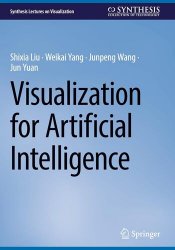 Название: Learn Data Science Fundamentals: A Beginner's Guide To Data Science Programs, Analysis And Visualization
Название: Learn Data Science Fundamentals: A Beginner's Guide To Data Science Programs, Analysis And VisualizationАвтор: Declan Ashford
Издательство: Independently published
Год: 2024
Страниц: 246
Язык: английский
Формат: pdf, epub, mobi
Размер: 10.1 MB
Are you eager to dive into the world of Data Science but unsure where to begin? Do you want to gain the skills to analyze and visualize data like a pro, even if you have no prior experience? Learn Data Science Fundamentals is your comprehensive guide to mastering the foundational concepts of Data Science, equipping you with the tools and techniques needed to thrive in today’s data-driven landscape. This book is designed to take you from a complete novice to a confident Data Science practitioner, guiding you through each step of the process with clear explanations and practical examples. Whether you’re looking to enhance your career, transition into a data-focused role, or simply satisfy your curiosity, this guide offers everything you need to get started. Understand the core tools and programming languages used in Data Science, including Python, R, SQL, and more. Learn how to set up your environment and get comfortable with the interfaces that professionals use every day. Go beyond the basics with techniques for transforming, aggregating, and merging datasets. Learn how to use libraries like Pandas and NumPy to perform complex operations with ease.








